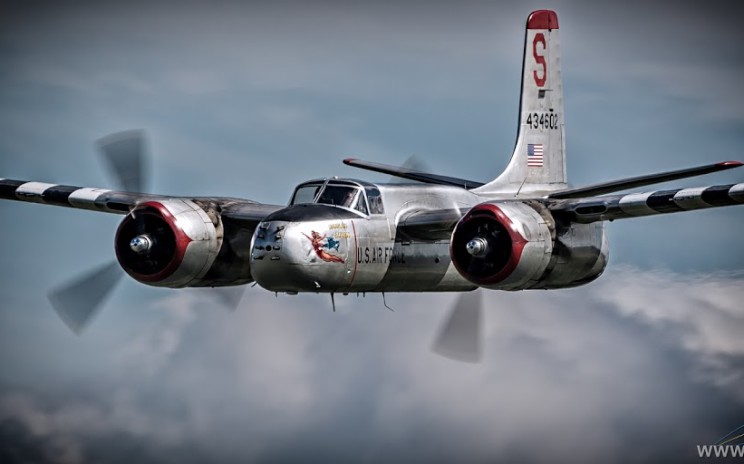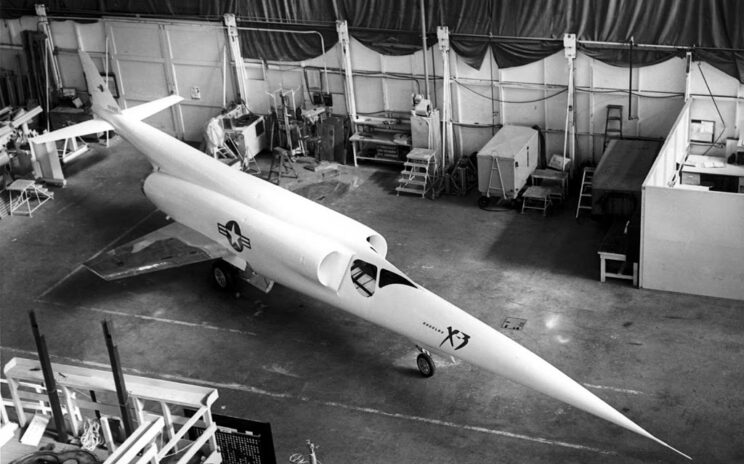Originally shared by +E-pic.se Dala-Järna 2015 http://www.e-pic.se/Aircraft/Aircraft-sorted-by-type/Douglas/Douglas-A-26B-Invader/ The Douglas A-26 Invader (designated B-26 between 1948 and 1965) is a twin-engined light bomber and attack aircraft that was built by Douglas Aircraft Company during World War II which also saw service during several major Cold War conflicts. It was found to be a fast aircraft capable of carrying twice its specified bomb load. A range of guns could be fitted to produce a formidable ground-attack aircraft.The A-26 was originally built in two different configurations. The A-26B had a gun nose, which originally could be equipped with a combination of armament including .50 caliber machine guns, 20mm or 37mm auto cannon, or even a 75mm pack howitzer. Normally the gun nose version housed six (or later eight) .50 caliber machine guns, officially termed the "all-purpose nose", later commonly known as the "six-gun nose" or "eight-gun nose". The A-26C 's "glass" nose, officially termed the "Bombardier nose", contained a Norden bombsight for medium altitude precision bombing. The A-26C nose section included two fixed M-2 guns, later replaced by underwing gun packs or internal guns in the wings.After about 1,570 production aircraft, three guns were installed in each wing, coinciding with the introduction of […]
Originally shared by +Gazing Skyward TV October 15th, 1952First flight of the Douglas X-3 Stiletto. The Douglas X-3 Stiletto was a 1950s United States experimental jet aircraft with a slender fuselage and a long tapered nose, manufactured by the Douglas Aircraft Company. Its primary mission was to investigate the design features of an aircraft suitable for sustained supersonic speeds, which included the first use of titanium in major airframe components. Douglas designed the X-3 with the goal of a maximum speed of approximately 2,000 m.p.h, but it was, however, seriously underpowered for this purpose and could not even exceed Mach 1 in level flight. Although the research aircraft was a disappointment, Lockheed designers used data from the X-3 tests for the Lockheed F-104 Starfighter which used a similar trapezoidal wing design in a successful Mach number 2 fighter…. Source:Wikipedia, Douglas X-3 Stiletto: http://gstv.us/1LMy3X8 YouTube, Douglas X-3 Stiletto: http://gstv.us/1LMypwS YouTube, Douglas X-3 Stiletto: 1950s U.S. Experimental Jet Aircraft: http://gstv.us/1LMyuAG YouTube, Aircraft, USA: Experimental X-3 Stiletto 250199-01: http://gstv.us/1LMyy3p If you enjoy the "This Day in Aviation History" collection, you may enjoy some of these other collections from Gazing Skyward TV: http://gstv.us/GSTVcollections Photo from: http://gstv.us/1LMyCjO #avgeek #aviation #history #Douglas #X3 #Stiletto #USAF #NACA […]

